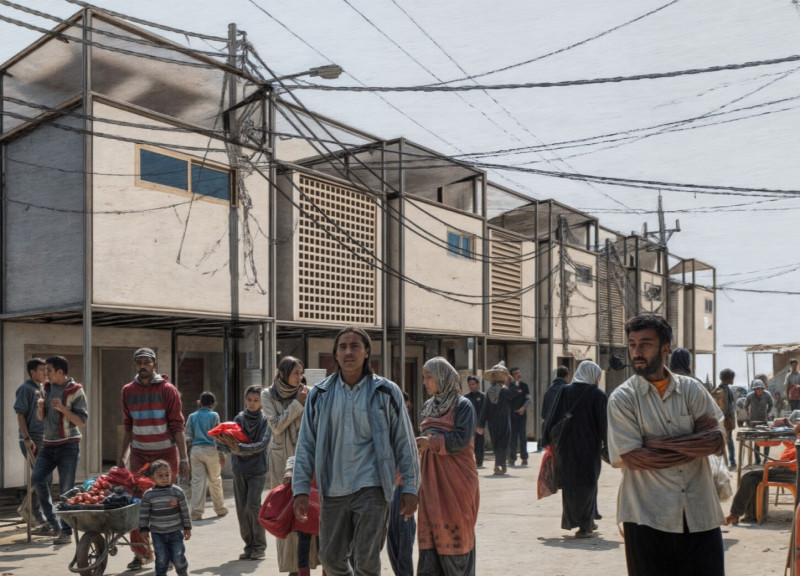5 key facts about this project
At its core, the design embodies a commitment to environmental responsibility through the use of sustainable materials and energy-efficient technologies. The primary materials utilized in this project include reinforced concrete, steel framing, glass facades, and sustainably sourced timber. These materials have been chosen not only for their durability and structural integrity but also for their capacity to enhance the building's energy performance. The concrete, for instance, acts as a thermal mass to regulate indoor temperatures, while the extensive use of glass facilitates natural daylight, reducing reliance on artificial lighting.
The architectural layout is meticulously crafted, featuring an open-plan concept that encourages fluidity and adaptability within the space. This layout also allows for flexible use, accommodating a variety of functions ranging from communal gatherings to private meetings. The integration of adaptable workspaces reflects modern trends in architecture that prioritize collaborative environments, making the project particularly relevant in today’s context where flexibility is essential.
One of the notable aspects of this architectural design is its engagement with the site. Nestled within its geographical location, the building seamlessly interacts with the surrounding landscape, enhancing the natural beauty and ecology of the area. The design considers local climate conditions, with features such as overhangs and shading devices that mitigate heat gain while framing views of the outdoors. This careful consideration of the site not only benefits the occupants but also fosters a connection between the building and the environment, emphasizing the importance of architecture that is in tune with nature.
The facade presents a unique design approach, shifting away from conventional forms and embracing a contemporary aesthetic that resonates with the culture of the locality. The use of varied textures and colors in the exterior materials not only provides visual interest but also contributes to the building's thermal performance. Large openings invite natural light deep into the interior spaces, while strategically placed balconies and terraces offer outdoor areas for relaxation and social interaction, further extending the experiential quality of the architecture.
Additionally, the integration of green spaces within and around the building enhances the overall atmosphere, promoting well-being and sustainability. Interior courtyard gardens and green roofs serve as natural buffers, improving air quality and creating tranquil spaces for reflection. Such biophilic design elements underscore the commitment to fostering a healthy environment for both occupants and the surrounding community.
The architectural aspects of this project extend beyond aesthetics and functionality; it represents a shift towards resilience and sustainability in contemporary design. By prioritizing eco-friendly materials and spaces that encourage social interaction, it becomes a model for future projects aiming to balance human needs with environmental considerations.
For those interested in delving deeper into the specifics of this project, I encourage you to explore the architectural plans, sections, and designs that provide further insight into the innovative ideas at play. This project exemplifies how thoughtful architecture can enhance both individual experiences and community connectivity, establishing a precedent for future designs that aim for a sustainable, inclusive, and engaging built environment.


























